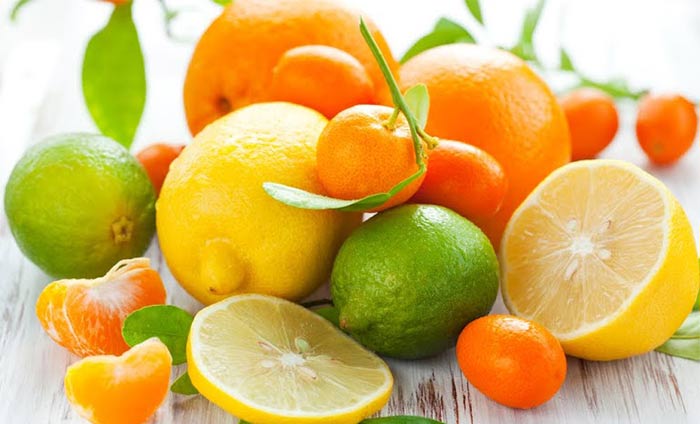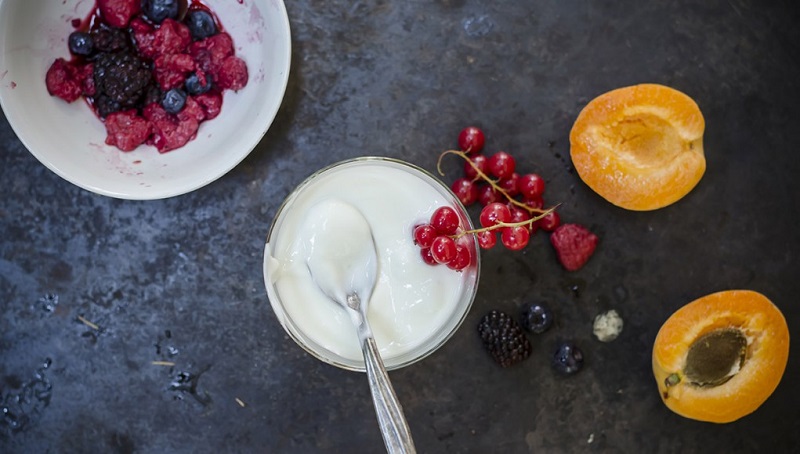It is not only a trademark of the National Union of Organizations of Fruit and Vegetable Producers, fruit to ensure the quality, origin and traceability of fruit and vegetables but also – especially we would say – of helpful advice on eating of fruits and vegetables daily to keep fit and maintain a good state of health and it is this aspect that intrigued us and we want to explore in this article.
As many of know, in fact, the regular consumption of fruit and vegetables greatly reduces the risk of chronic diseases. International organizations such as FAO and WHO, for example, recommended to eat at least 400 grams of fruit and vegetables a day, preferably in five different times of day. Not only that the psychological well-being is achieved by varying day by day the choice of fruits and vegetables, ensuring our body the daily requirement of certain substances.
All this is made possible by the consumption of fresh fruit and vegetables grouped according to colors that distinguish them (hence the breakdown of 5 colors of well-being): the white, the blue-violet, the yellow-orange, the red and green.
Let’s find out each of these colors being…

The 5 wellness Colors
White group
White refers to vegetables and vegetables such as garlic, onion, cauliflower, celery, fennel, mushrooms, apples, pears, leeks. Fruits and vegetables in this group reinforces the bone and lungs, prevent cardiovascular diseases and help fight cancer.
The phytochemical (a substance that occurs naturally in plants) typical of white fruits and vegetables is the quercetin, an antioxidant enemy of cancer. In addition, these products also contain isothiocyanates, which help prevent cellular aging, and are rich in fiber, minerals like potassium and vitamins, especially vitamin C.
Group blue-violet
This group includes fruits and vegetables such as figs, berries, eggplant, plums, radicchio and black grapes.
These products help to prevent cancers and cardiovascular diseases, combrattono diseases of the blood circulation, capillary fragility due to anthocyanins. They are also useful in preventing atherosclerosis, inhibit platelet aggregation and improve visual function.
Among the products of blue-purple group, currants and radicchio are great antioxidants as rich in Vitamin C and leading players in the formation of carnitine and collagen.
The berries, however, are responsible for the fragility of the capillaries and prevent urinary tract infections.
In the blue-purple group, we are rich in fiber and carotenoids products, useful in preventing and fighting cancer, cardiovascular disease, stroke, cataracts, cellular aging, neurodegenerative diseases and aging.
One of the best foods in this group is the radicchio, which contains beta-carotene, which intervenes in the growth, reproduction and maintenance of tissues, the immune function and the mechanism of vision. Radicchio, then – as figs, currants, blackberries and plums – also contains potassium, which helps protect the bone tissue and decreases the risk of cardiovascular disease and hypertension. Magnesium is also rich eggplant. The berries, however, help maintain healthy gut due to their soluble fiber, which regulates the absorption of other foods and feeds the microbial intestinal flora.
Red group
In the group of red fruits and vegetables which are watermelon, red orange, red beet, cherry, strawberry, tomato, radish, beetroot.
These natural products are able to reduce the risk of developing cancers and cardiovascular diseases, in addition to protecting the epithelial tissue. They act as powerful antioxidants, especially thanks to the presence of two phytochemicals: lycopene and anthocyanins. While the former – which are rich tomatoes and watermelons – helps fight specific cancers (breast and ovarian cancer in women and prostate in men), anthocyanins (present, for example, red in orange) are a useful ally in treatment of diseases of the blood vessels, capillary fragility, atherosclerosis procured in the prevention of high cholesterol levels, inhibition of platelet aggregation and in the strengthening of view.
The natural products are part of the red group containing vitamin C (in particular strawberries and blood orange) and also help to stimulate the immune system, wound healing and increase the absorption of iron contained in vegetables.
Yellow-orange group
In this group, we find apricots, oranges, carrots, clementines, khaki, lemons, mandarins, melons, loquats, nectarines, peppers, peaches, grapefruit and gourds: these foods prevent the risk of developing cancer and cardiovascular disease, enhancing even the sight and preventing cellular aging.
Beta-carotene is definitely the phytochemical compound typical of this color: it is characterized by a powerful antioxidant and pro-vitamin action and protects us from free radical damage. It is absorbed with fats and – when taken with food – does not lead to overdose, such as may occur with excessive use of supplements.
To prevent the formation of various types of cancer, the yellow-orange has available flavonoids, which act primarily in the gastro-intestinal level, neutralizing the formation of free radicals or capturing them before they can damage other molecules.
In the yellow-orange team the pepper, lemon and orange, are rich in vitamin C and are powerful antioxidants; also contribute to the production of collagen and is scientifically proven also the protective action of anthocyanins, fitochimci compounds with anti-inflammatory, anticancer and anticoagulant present in large amounts in oranges.
Green group
This group includes asparagus, beet greens, cress, broccoli and broccoli, basil, artichokes, cabbage, cucumbers, chicory, broccoli, endive, kiwi, lettuce, parsley, arugula, spinach, grapes, zucchini. The green color comes from the presence of chlorophyll, a powerful antioxidant. The green leafy vegetables are a great source of folic acid and folate, which help prevent atherosclerosis and incomplete closure of the spinal canal of babies during pregnancy.
The carotenoid, another compound typical of this group phytochemical, helps our body to prevent many types of cancer and to protect it from coronary heart disease. Always carotenoids are responsible for the views, the development of epithelial cells and also defending aging.
Greenery there’s also the magnesium, a mineral with many important qualities for the metabolism of carbohydrates and proteins, which also regulates the pressure of the blood vessels and nerve impulse transmission. Magnesium gives a great help to our well-being by stimulating the absorption of calcium, phosphorus, sodium and potassium.
Other beneficial properties of fruits and vegetables of the Green Group are the presence of large quantities of vitamin C (especially inbroccoli, parsley, spinach and kiwi) that also promotes the absorption of iron content in fruits and vegetables and is a powerful antioxidant because it protects against radicals free (associated with the development of cardiovascular, neurological diseases, cancer and premature aging).
Conclusions
We should color our days – especially our tables – with these 5 colors of well-being, making them our daily rainbow for body care.
Input and advice in this article are sufficient to start with a healthy eating and daily fruit and vegetables, but if you want to deepen the knowledge of the 5 colors of wellbeing – and related products – we recommend starting from the article.



